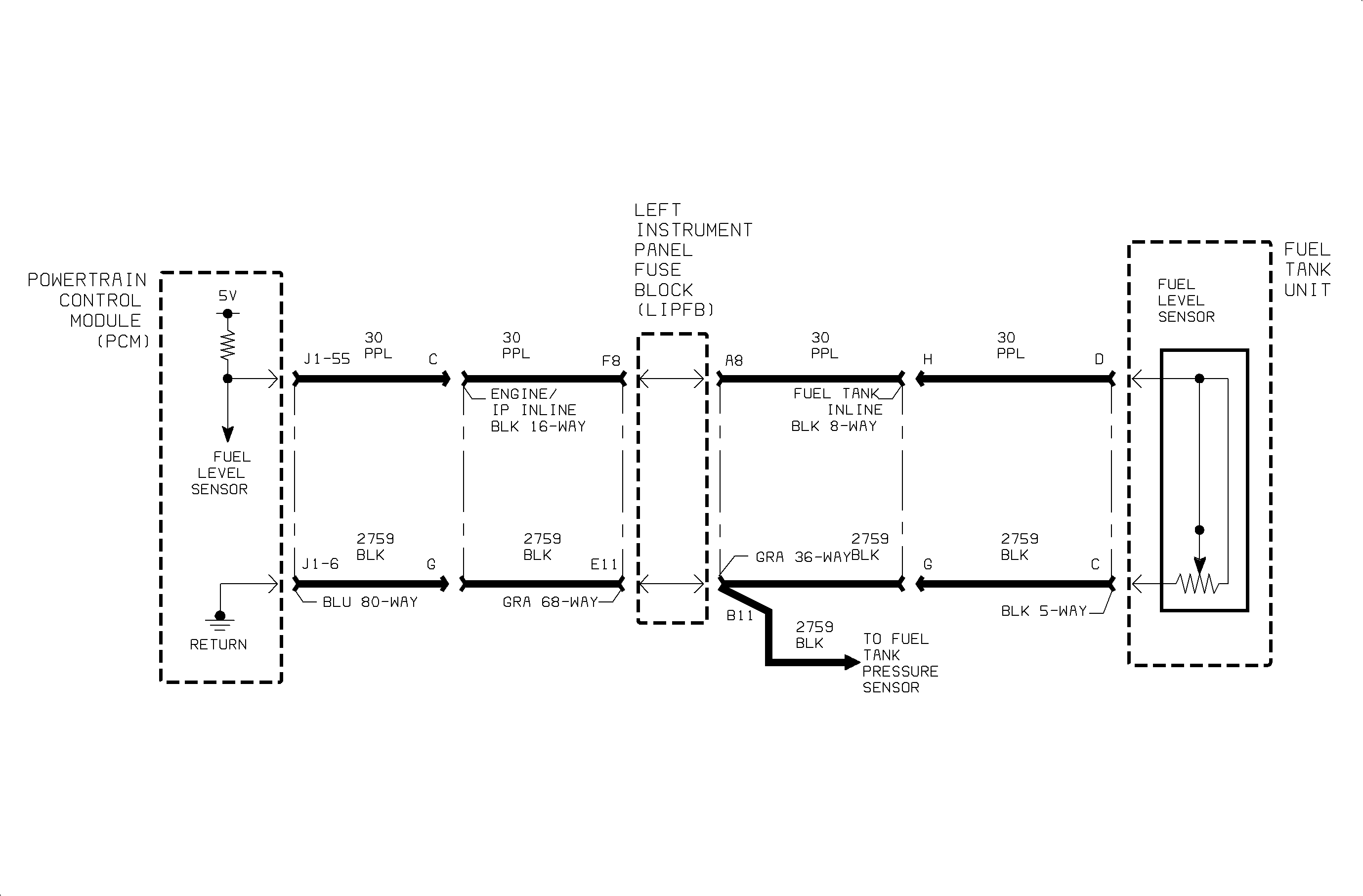
Circuit Description
The fuel level sensor is a variable resistor that varies resistance according to changes in the level of fuel in the fuel tank. The PCM supplies a 5 volt reference through a pull-up resistor to the sensor, which is connected to ground. When the level in the fuel tank is high, the sensor resistance is low (low voltage on signal line). As the fuel level decreases, the sensor resistance increases (voltage increases on the signal line). The PCM uses the signal voltage to determine fuel tank level. The PCM averages the fuel level over time then sends it over the Class II link to the BCM. The BCM averages the fuel level with respect to vehicle speed then sends out a message to the I/P cluster for the fuel gauge over the link. DTC P0461 sets when the signal voltage at the PCM does not change a calibrated amount after the vehicle has been driving a long distance.
Conditions for Setting the DTC
DTC P0461 will set if fuel level changes less than 1.6% when:
| • | Vehicle has been driving over 120 miles |
| • | DTC P0462 or P0463 has not been set |
DTC P0461 diagnostic runs once per ignition cycle.
P0461 is a (type D) DTC
Diagnostic Aids
This DTC sets due a fuel level that is not changing over driving time.
Use Scan tool to monitor FUEL LEVEL while raising vehicle from the rear. Percentage should change indicating a moving float.
Fuel gauge should closely match FUEL LEVEL percentage reading on the scan tool with ignition On, engine Off, with zero vehicle speed (i.e. 25% = 1/4 full).
Fuel level reading on Scan tool is averaged over time.
Fuel level sensor resistance range should read between 19-251 ohms.
Possible causes of static fuel level:
| • | Fuel sender float stuck or perforated |
| • | Fuel sender sweep arm stuck |
